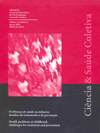0765/2007 - ANTROPHOMETRIC EVALUATION AND FOOD INTAKE OF PRESCHOOL CHILDREN AT MUNICIPAL EDUCATIONAL CENTERS, IN SOUTH OF MINAS GERAIS, BRAZIL.
AVALIAÇÃO ANTROPOMÉTRICA E ANÁLISE DIETÉTICA DE PRÉ-ESCOLARES EM CENTROS EDUCACIONAIS MUNICIPAIS NO SUL DE MINAS GERAIS.
Author:
• Hércia Stampini Duarte Martino - Martino, H.S.D. - Viçosa, MG - Universidade Federal de Viçosa - <hercia@ufv.br>Thematic Area:
Não CategorizadoAbstract:
To evaluate socioeconomic conditions, nutritional status and food intake of preschool children assisted at Municipal Educational Centers (CEMs) of Alfenas, Minas Gerais, Brazil. A traverse study involving 186 children was performed. The socioeconomic profile, weight, height, age, sex and food intake by a direct weighting tool were evaluated. It was observed an income family of one to three minimum wages, incomplete fundamental learning, private house with basic sanitation, four to five inhabitants per house of whom two worked at most. The average age was 49.2 12.9 months. Stunting rates were nutritional deviation more prevalent among the children (20.5%). The whole, 72.6% of children have energy intake below Estimated Energy Intake (EER). However, when stratifying for age group, 78.4% of the children have high energy intake among 1 to 3 years and 74.1% have inadequate energy intake among 4 to 6 years. All children presented consumption below to Adequate Intake (AI) of calcium and most of them below to Estimated Average Requirement (EAR) of iron. Despite some biosocioeconomic factors be favorable to the nutritional status, malnutrition, and inadequate nutrient intake were present, which demanded the implementation of nutritional programs in CEMs.Key words: nutritional status, food intake, nutrients, preschool children, WHO child growth standards











